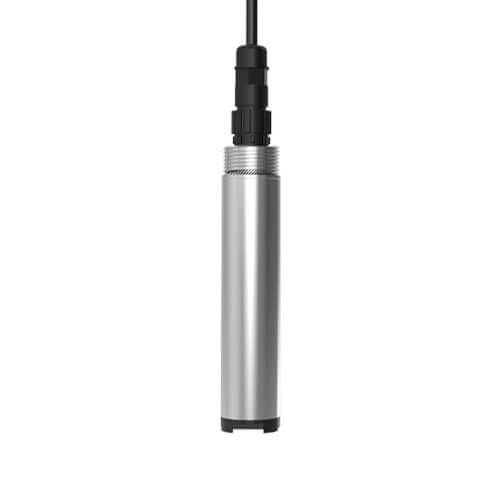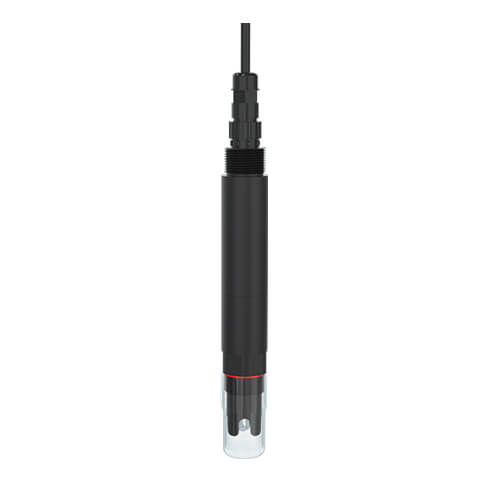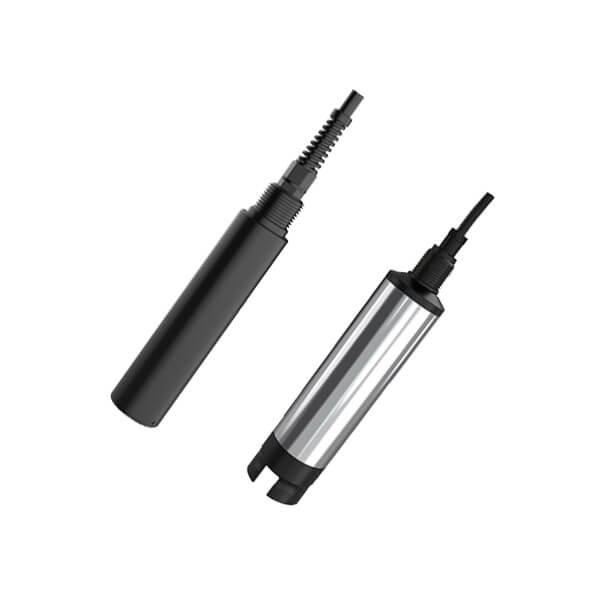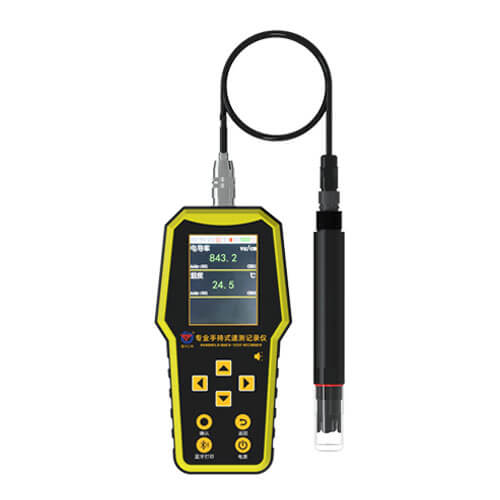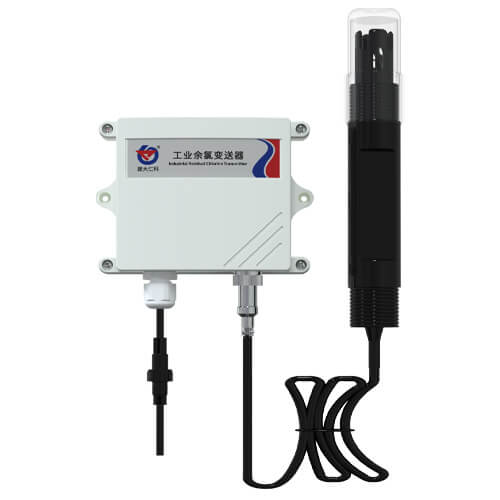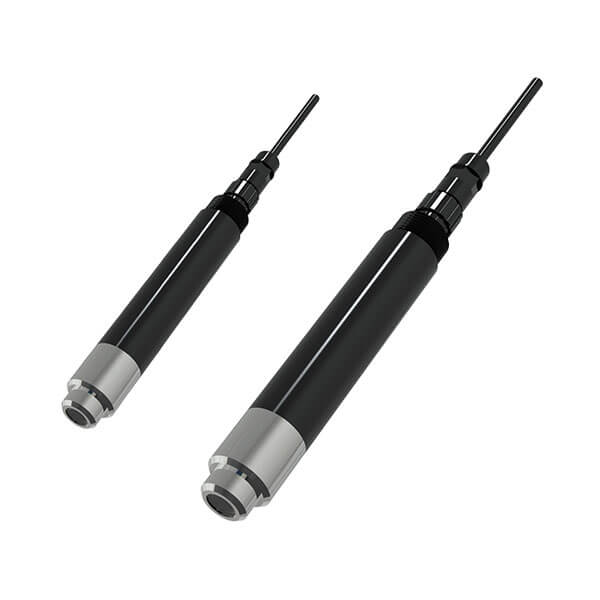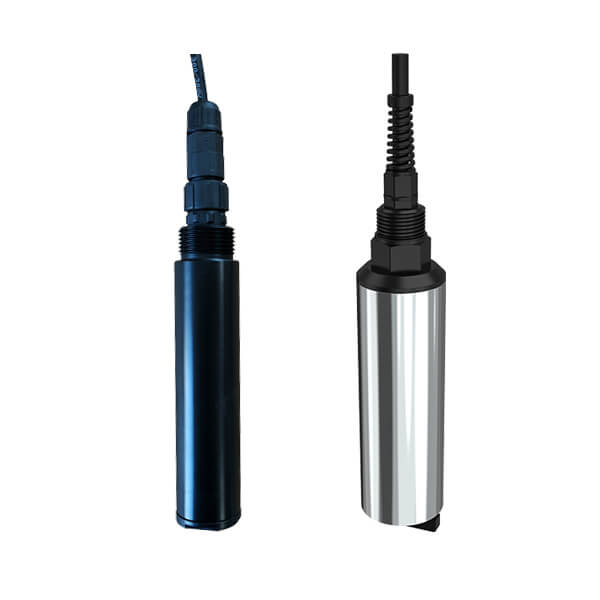Table of Contents In wastewater treatment projects, it is essential to monitor water quality at every stage to ensure that
Oil in Water Sensor
The RS-OIL-N01-2-EX is an instrument designed to measure the concentration of oil substances in water. It utilizes fluorescence detection technology and outputs data in relative fluorescence units (RFU), facilitating the analysis of the correlation between fluorescence intensity and oil concentration in water. This oil in water sensor is equipped with a built-in temperature transmitter, enabling automatic temperature compensation for improved measurement accuracy. It is ideal for long-term monitoring of oil pollution in water environments.
- Model: RS-OIL-N01-2-EX
- MOQ: 1 PCS
- Delivery date: within 24 hours
- Price:$420
View - Oil in Water Sensor
The fundamental purpose of an oil in water sensor is to detect various types of oil substances in water, primarily petroleum-based compounds. When oil enters water, it forms a surface film that hinders oxygen exchange, leading to oxygen depletion and the death of aquatic organisms. Additionally, toxic components in oil can harm aquatic life and disrupt the food chain. Furthermore, oil contamination in drinking water poses serious risks to human health.
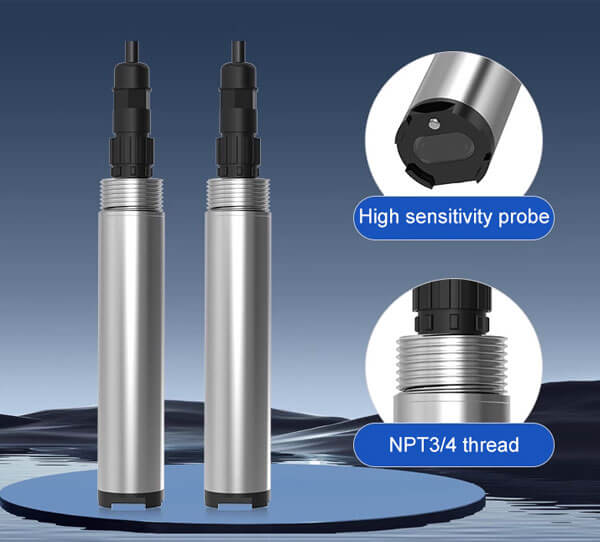
Features
Our oil in water sensor operates based on the fluorescence response of polycyclic aromatic hydrocarbons (PAHs). By detecting the intensity of fluorescence, the sensor estimates the concentration of oil substances in water. Therefore, this product is primarily suitable for monitoring petroleum-based pollutants and does not represent the total concentration of all types of oil in water.
For environments with high levels of contamination, we offer an optional automatic cleaning bracket to ensure consistent and reliable operation through self-cleaning.
This oil in water sensor is widely used in applications such as industrial cooling water, circulating water, boiler feedwater, reclaimed water reuse, and wastewater discharge. It is particularly well-suited for use in circulation water treatment processes in petrochemical, oil refining, and related industries.
Datasheets
| Power supply | DC 7~30V |
|---|---|
| Average power | ≤0.5W |
| Measure range | 0~50ppm/0~100RFU |
| Accuracy | ±5%FS (25℃); ±0.5℃ |
| Resolution | 0.01ppm/0.1RFU |
| Response time | ≤30sec, T90 |
| Working conditions | 0~40℃ |
| Working principle | fluorescence method |
| Protection level | IP68 |
| Electrode line length | default 5m |
| Casing material | corrosion-resistant material |
| Output method | RS485 |
Calibration of the Oil in Water Sensor
Preparation of standard solution
Take 1 g of zinc sulfate dry powder and dissolve it in 50 mL of 0.05 mol/L H₂SO₄ solution. Transfer the solution to a 1 L volumetric flask and dilute to 1 L to obtain a 1000 ppm zinc sulfate standard solution.
Take 0.05 mL of the 1000 ppm zinc sulfate standard solution, transfer it to a 1 L volumetric flask, and dilute to 1 L with 0.05 mol/L H₂SO₄ solution to obtain a 50 ppb zinc sulfate standard solution (equivalent to 44 ppm oil-in-water value).
Our sensor uses two-point calibration, including zero-point calibration and slope calibration. It is recommended to use a 44 ppm oil-in-water standard solution for slope calibration. During calibration, it is recommended to use a dark, opaque wide-mouth bottle with a capacity of more than 500 mL.
Calibration
Zero-point calibration: Place the device in pure water (avoid direct sunlight, ensure the measuring end is submerged more than 2 cm below the solution surface and at least 7 cm above the container bottom, and avoid reflections). Wait for more than 30 seconds until the reading stabilizes, then perform zero-point calibration.
Slope calibration: Place the device in the 44 ppm oil-in-water standard solution (avoid direct sunlight, ensure the measuring end is submerged more than 2 cm below the solution surface and at least 7 cm above the container bottom, and avoid reflections). Wait for more than 30 seconds until the reading stabilizes, then perform slope calibration.
Oil in Water Sensor FAQs
What is oil in water?
Oil in water refers to the presence of oil substances dispersed within a water body. These substances include crude oil, fuel oil, engine oil, lubricating oil, and similar compounds. Oils in water typically exist in suspended or dissolved forms.
Based on droplet size, oil in water can be classified into three categories:
- Oil droplets larger than 150 microns are called “free oil“, which is the most common form of oil pollution in water.
- Droplets between 20–150 microns are referred to as “dispersed oil“.
- Droplets smaller than 20 microns are known as “emulsified oil“.
What are the methods for measuring oil in water?
Several methods are commonly used to measure oil content in water:
1. Gravimetric Method: Mineral oil in the sample is extracted using a solvent. The solvent is then evaporated, and the remaining residue is weighed to determine the oil content.
2. Infrared (IR) Method: Measures absorbance at specific IR wavelengths corresponding to functional groups like CH₂ and CH₃ in oil molecules to calculate the oil concentration. This is an effective method for detecting mineral oils.
3. Ultraviolet (UV) Method: Detects substances with conjugated double bonds by measuring their UV light absorbance to determine oil concentration in water.
4. Chromatographic Method: Uses differences in distribution coefficients between different substances across stationary and mobile phases to produce chromatograms for qualitative or quantitative analysis.
5. Fluorescence Method: Organic compounds emit fluorescence after absorbing light of a certain wavelength. The fluorescence intensity is measured to determine oil content.
6. Optical Method: Utilizes spectrometers or turbidimeters to measure light transmittance or scattered light intensity in water samples to estimate oil concentration.
7. Gas Chromatography (GC): Separates and analyzes oil components in a water sample for quantitative determination.
8. Solvent Extraction Method: Organic solvents are used to extract oil from water samples, and the extracted solution is analyzed further.
9. Membrane Filtration Method: A microporous membrane filter captures oil droplets from the water sample, which are then analyzed using other techniques.
How to maintain the oil in water detector?
1. Do not disassemble or attempt to repair the sensor if a fault occurs. Please contact us promptly for support.
2. Before measurement, remove the black rubber protective cap.
3. Regularly clean any attachments on the electrode surface according to the environmental conditions. Contaminants may cause measurement errors. Avoid scratching the optical part during cleaning. (Recommended cleaning interval: every 30 days.)
4. Rinse the electrode’s outer surface with flowing water. If contaminants remain, wipe gently with a soft, damp cloth.
5. Calibrate the device before each use. For long-term use, it is recommended to recalibrate every 3 months. Calibration frequency should be adjusted based on application conditions (e.g., pollution level, chemical deposition, etc.).
How to install the oil in water sensor?
Our oil in water detector is equipped with an NPT 3/4 thread and can be used with our waterproof conduit. Route the cable through the pipe and screw the device into the threaded section of the waterproof conduit.
Note: Install the electrode in a low-flow area with no air bubbles. Maintain at least 5 cm distance from the surrounding walls, and ensure there are no obstacles or reflective surfaces within 7 cm beneath the sensor.
Can the oil in water sensor be used for long-term online monitoring?
Yes, most industrial-grade oil-in-water sensors support 24/7 continuous online monitoring and are suitable for automated environments.
Is the oil in water sensor affected by water quality?
Yes, high turbidity, suspended solids, algae, or organic dyes may interfere with measurements. Pre-treatment or anti-interference models are recommended for such conditions.
Does the sensor have waterproof and corrosion-resistant features?
Our sensor is rated IP68 and features a stainless steel or corrosion-resistant housing, making it suitable for long-term use in harsh environments.
Can it be integrated into a cloud platform or remote monitoring system?
Yes, the sensor supports integration with remote monitoring systems via RS485-to-USB modules or IoT platforms for real-time data transmission and cloud-based analysis.
What is included in the shipment?
Oil in water sensor * 1
5-meter cable * 1
Certificate of conformity, warranty card, and related documents
How to wire the oil-in-water sensor?
Our product uses RS485 signal output and comes with a default four-core bare wire.
Brown wire: Power supply positive
Black wire: Power supply negative
Yellow wire: RS485-A
Blue wire: RS485-B
Popular Water Quality Sensors
Related Blogs
Table of Contents In daily life, industrial production, and laboratory research, the terms “distilled water” and “purified water” are often
Table of Contents What is chlorine? Chlorine (Cl) is a yellow-green gas with a pungent odor, known for its strong
Table of Contents What is Hydrology? Hydrology refers to the various phenomena of water changes and movement in nature. It
Table of Contents What do pH Mean in Water? The water pH is an important indicator of its acidity or
Table of Contents What is conductivity in water? Conductivity in water is the ability of water to conduct electricity. It
Table of Contents We need to understand what is turbidity, before learning the turbidity sensor. Turbidity is a measure of
What is dissolved oxygen? Dissolved oxygen (DO) refers to molecular oxygen dissolved in water. The unit is mg/L, which means
Table of Contents Everyone knows that the choice of water quality sensors is very important. In water measurement, the ph
Table of Contents Water is the source of life, integral to every aspect of human production and daily living. In

